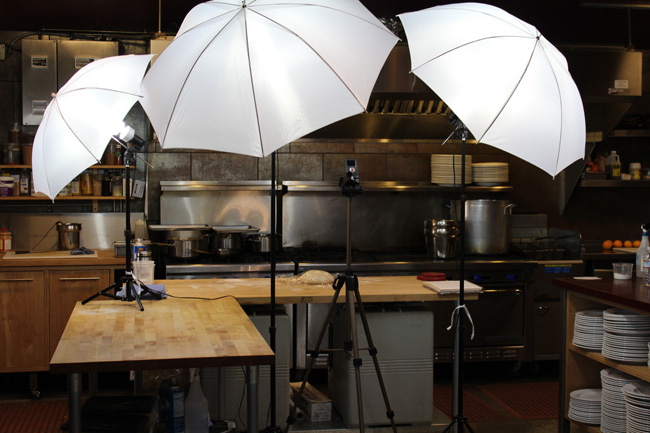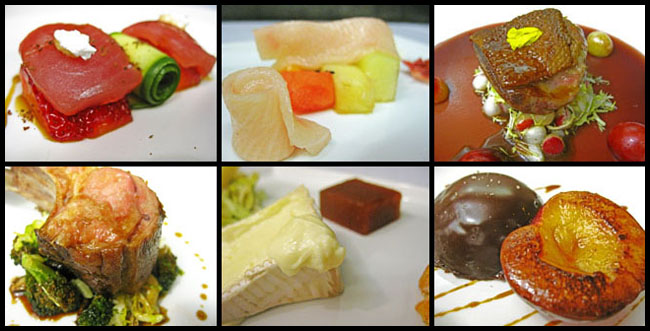Lost In Translation
LOST IN TRANSLATION
by Zalbar
Introduction
When I was asked to explain the whole saute pan versus frying pan issue it seemed at first to be a rather simple thing. However, the topic itself raised a whole other series of questions for me. Why are there so many french terms used in english speaking kitchens? Why do we even use them instead of our own unique words? What led to french labels and techniques dominating the globe and spreading as far and as wide as it does today? Subsequent Lost In Translation articles will explore the culinary history and evolution of french cooking as well as it’s impact on cuisines around the world. However, let’s first look at the subject that kicked off this series of articles. The saute, sauteuse and sautoir.
PART I
~ Saute, Sauteuse, Sautoir ~
The kitchen, both domestic and commercial, is littered with french terminology and for good reason. It is the french that set out in print the what, when, where and how of modern culinary practices and techniques in use today. It was the french chefs who were hired by other countries royalty and upper class houses to prepare lavish banquets and feasts. Their methods and terminology have stood the test of time and endured throughout the ages. History as well as several major societal and cultural upheavals are what has birthed one of the dominating and most influential cuisines to leave it’s imprint upon the globe.This is not to say that there are not also a goodly number of culinary texts and traditions from other countries that have endured as well, however, french cuisine stands apart as being recognized at either extreme of the dining experience. On the one hand it is almost art with it’s small complicated towering mounds of delicately sauced and perfectly cooked morsels of food. They flood the palate with undulating waves and layers of flavour and texture, each more exquisitely satisfying than the next. On the other hand it is also renowned for being a culinary pioneer of down to earth, rustic and heart warming comfort food using every scrap of an animal or vegetable. While most of us would snap our asparagus in half, blanch and eat the top part, the french would calmly retrieve the discarded stems, peel them, and show you the wonderfully tender shoots hidden beneath. To use a euphemism of my own making, the french dive deep in both ends of the culinary pool.
The english saute pan is derived from the french pan called a sautoir. A noun, a thing. The word saute can also be used as a verb, an action. Our problem is that we tend to borrow some terms and ignore others as well as the meaning behind the word and thus lose the comprehension of everything else similar that surrounds it.
In french, to saute something merely means to fry ingredients with a little fat over high heat. That is the complete definition right there, nothing more, nothing less. The word saute itself literally means jump. I’m sure this is not new to anyone, and everyone has read this explanation or heard it somewhere. What most of us fail to grasp is the actual meaning behind the word. The jumping is in reference to the action of ingredients in hot oil but can also refer to the sauteing technique of tossing food rapidly into the air. What type of pan you use determines the method of sauteing that is most applicable.
The sautoir is a wide shallow pan with straight sides, what is also termed a saute pan in english. Sauteing in this is what we would normally call pan frying. As water escapes the ingredients, due to heating, it jumps and bounces in the pan. It sautes. Think of how you cook a steak on the stove-top. High heat and a bit of oil in the pan and away we go. A few minutes on either side and then off to rest before plating and eating. There is no tossing of the food in the air. We are not swinging the pan around like we’re sifting for gold. Yes, this is still sauteing food to the french. Remember, high heat and a small amount of fat. That is the only qualification to be considered for sauteing an ingredient.
The sauteuse is a long handled bowl shaped pan. If you took a big cereal bowl and put a long handle on it you wouldn’t be all that far off. We would use small pieces of meat or vegetable, often times both at once, with the saute method of rapidly tossing the items in the air to achieve browning on all sides. This is what we are most familiar with when we use the term saute.
Another similarly misunderstood word is deglaze or deglacer. Glace. Demi-Glace. Glace de viande. These are all terms we have heard before. Most people know that glace is the french word for ice. If we deglaze the pan and make a pan sauce we call this in french, saute-deglace. But to understand it in culinary terms as the french use it we have to look at it’s meaning. For example glace de viande, which is really concentrated and reduced brown stock or sauce, would translate literally as meat ice. I know, it doesn’t sound very appetizing, but there it is. It also doesn’t really make much sense in english. Glace, where we get our word glaze from, doesn’t only mean ice, as in frozen water. It is referring to the whole process of cooling or heating something so that it thickens. If anyone has ever seen the rubber hockey pucks that are glace de viande, you are probably now getting an inkling of the true meaning of the word glace. Deglace where instead of glacing or glazing something till it thickens to the proper consistency such as in barbecue ribs, we are doing the reverse. The fond or solids, this glace, left in the pan becomes liquid. We deglace or deice them. Another way to say it it is that we un-ice it, we melt it.
All this rambling is to point out what I meant by understanding the cultural and contextual meaning behind a word or phrase. Especially a foreign phrase, and to not use it rote or off the cuff. Why the words mean what they do is very important. If you asked someone how their boyfriend or girlfriend was and got the response “They rock my world.” You would understand. Trying to explain that to someone in a literate sense that only speaks italian, for example, would be almost impossible. Literal translations simply do not work. You have to get at the significance of the phrase to truly relay it’s meaning. This is the most important lesson to take away from this whole article and not just the meaning behind the saute pan and the saute method.
The weird dichotomy of the whole saute, sauteuse, and sautoir thing though is that, if you step into any non-traditionally french kitchen and ask for a saute pan what you’ll most likely be handed is a sauteuse, and if you buy a saute pan what you’ll get is a sautoir. Most pans you see stacked up and used in kitchens and on the burners are simply frying pans or poeles which we define as a flat shallow curved sided pan. We most often use the saute method with them, but they are neither a sauteuse or a sautoir. Ironically, one cannot saute food, in an english kitchen, in a saute pan.
~Zalbar








